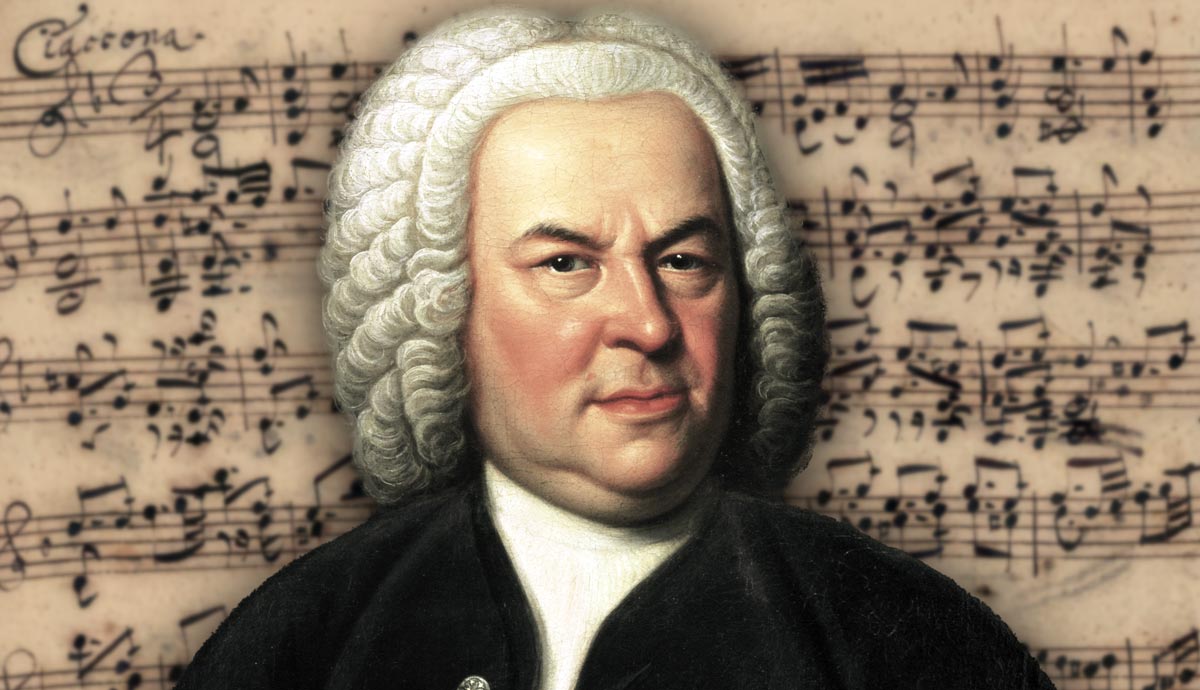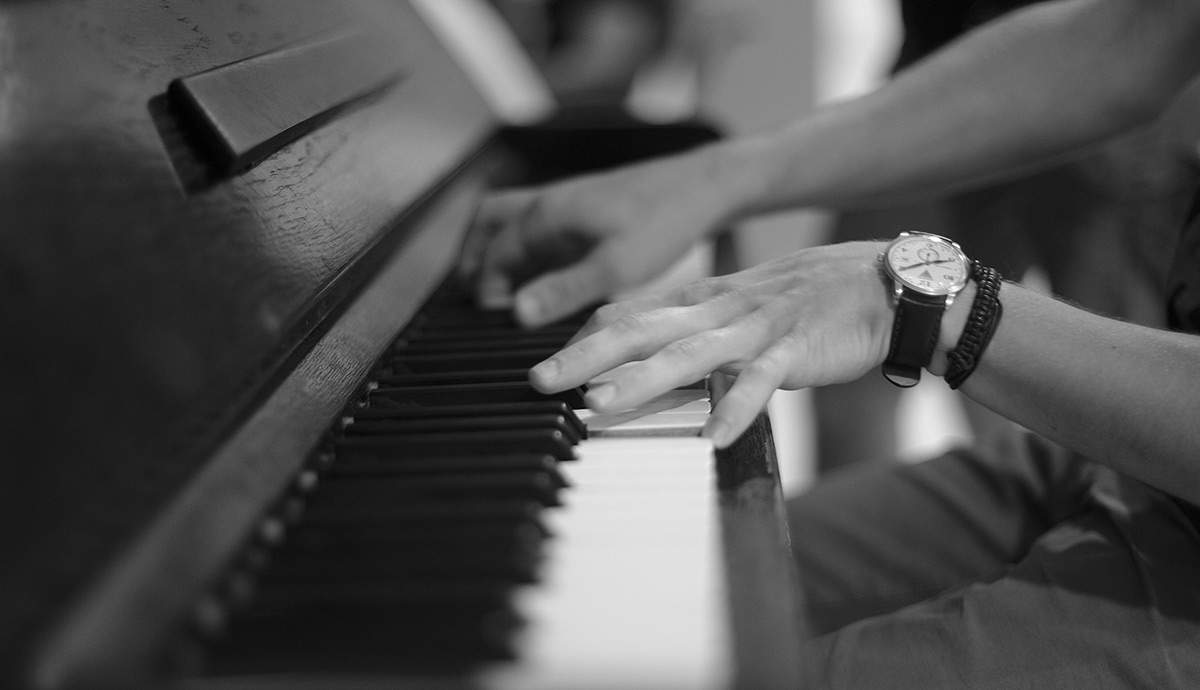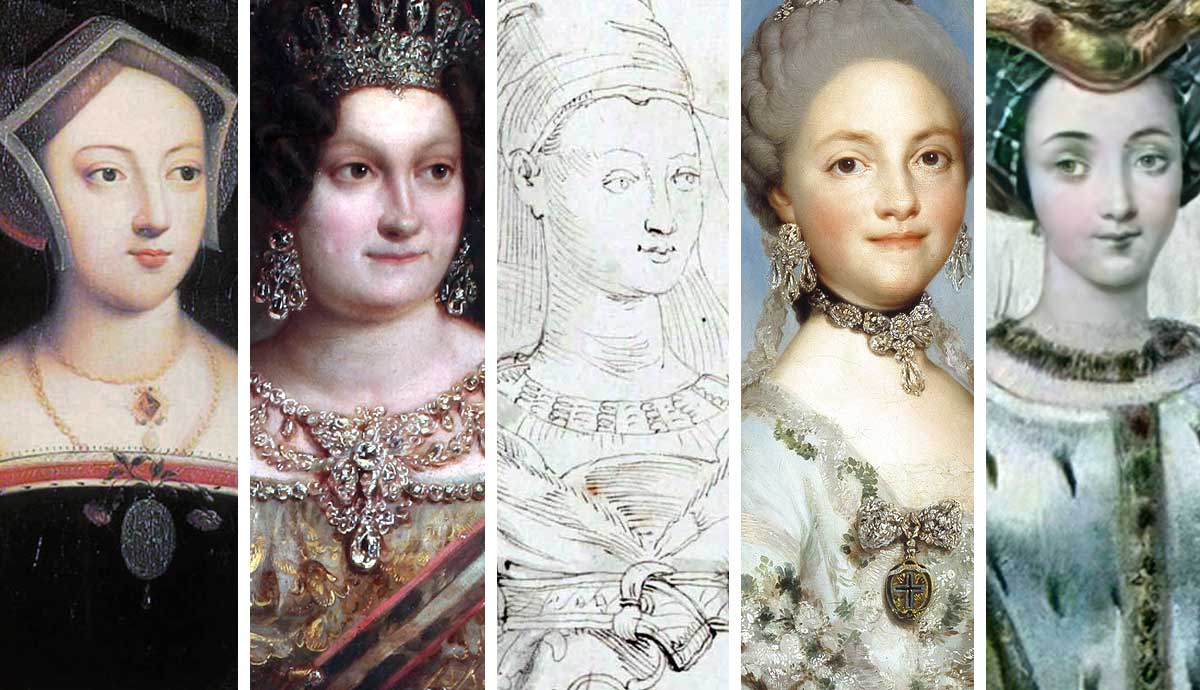
Johann Sebastian Bach (1685-1750) is one of the greatest musical geniuses of all time. Through five significant compositions, we’ll look at the genius of JS Bach and discover the legacy of his music while revealing the depth and breadth of his artistic mastery. From the Coffee Cantata (BWV 211), which shows Bach’s lighter side while reflecting the popularity of coffee (and its perceived dangers) in eighteenth-century Leipzig, to his Chaconne from Partita No. 2 for Solo Violin (BWV 1004) which is a monumental work feared and revered by violinists and probably born out of personal grief.
1. Schweigt Stille, Plaudert Nicht, ‘Kaffeekantate’ (the Coffee Cantata), BWV 211
While Bach was working in Leipzig as Cantor (music director) of St. Thomas Church, he was also involved in the city’s secular music performance ensemble, Collegium Musicum. Georg Philipp Telemann started the ensemble in 1702. In 1729, Bach took the role of director. He regularly performed with the ensemble at the local coffeehouse, Zimmermannsches Kaffeehaus (Café Zimmermann) — a social coffee house for the gentlemen of Leipzig.
This composition, a cantata composed between 1732 and 1735, shows JS Bach’s “lighter” side and is another example of his brilliance in the popular forms of his time (he never composed an opera, though). The staged version linked above is a miniature comic opera telling the story of a disgruntled father, Schlendrian, who berates his daughter (Lieschen) for her love of coffee. Through clever maneuvers and outright disobedience, her love affair with coffee continues. If Bach were to compose an opera, it would have sounded (and looked) like the Coffee Cantata.
Below the surface, there is also more to it than a daughter defying her father about her coffee habit. First, the work also parodies the coffee house’s wild popularity in eighteenth-century Leipzig — think of husbands avoiding their wives or men taking time off work to visit the coffee house. Second, Schlendrian was symbolic of some of Leipzig’s society who believed coffee should be avoided at all costs and it is, in fact, a bad habit that should be broken.
2. Chaconne, Partita No. 2 In D Minor For Solo Violin, BWV1004
Johann Sebastian Bach’s Chaconne stands as a towering giant in the world of solo violin music.  Bach did not document his reasons for composing the partita. It could have been intended as a pedagogical work for instructing violinists in the art of contrapuntal playing. Like The Art of Fugue, it was probably never intended for public performances.
The Chaconne is the last movement of the Partita No. 2 for Violin in D minor. Each of the preceding movements is composed in a popular dance form taken from a suite found in the Baroque era. Although one would not associate the serious music of the Chaconne with dancing, it is a form of dance, nonetheless.
Considering the length of the piece, it is unusually long for one of Bach’s compositions. Although he composed major works lasting over an hour or two, they are comprised of shorter movements. The Chaconne lasts between twelve and 15 minutes depending on the performer’s style and tempo. It is as long as the preceding four movements.
The overall structure is simple: it opens with a phrase lasting four bars stating the theme of the work. 64 phrases or “variations” follow, each also lasting four bars. Each starts with the tonic chord (D minor or D major) and returns to the tonic (first chord of the scale). While this may sound static and boring, Bach transforms the simple theme in numerous ways. When the rhythms become more complex, the harmonies you will hear become simpler, and vice versa.

At the 34th variation, the mood shifts from somber to happy and sprightly in D major. What starts as a simple “variation” builds in intensity before it returns to the original D minor key signature. The last few “variations” are some of the most complex until the opening theme bookends the composition.
Instead of a linear progression throughout the piece, Bach uses numerous techniques to drive the music forward: some themes are matched in pairs while others connect in larger groups. At times, melodic ideas are stretched across phrase boundaries, and what you will intuitively perceive will not match the four-bar phrase structure.

Historians speculate that Bach composed the piece after returning from a trip and learning Maria Barbara, his first wife, and mother of seven of his children, had passed away; meaning, that the Chaconne was composed sometime between 1718 and 1720.
Bach returned to Cöthen from a trip to Carlsbad. Maria Barbara had suddenly taken ill during that time and was already buried when he returned. He had no other means of grieving, and so the Chaconne was supposedly born as a form of lament. This may be true, or it may be a myth. However, the emotional power of the work is striking, as Johannes Brahms wrote to Clara Schumann in a letter:
“On one stave, for a small instrument, the man writes a whole world of the deepest thoughts and most powerful feelings. If I imagined that I could have created, even conceived the piece, I am quite certain that the excess of excitement and earth-shattering experience would have driven me out of my mind. If one does not have the greatest violinist around, then it is well the most beautiful pleasure to simply listen to its sound in one’s mind.”
Whatever the reason was for composing this monumental work whether religious, or as a lament, or pedagogical work — expect to be moved.
3. Brandenburg Concertos No. 1-6, BWV 1046-1051
One can think of the Brandenburg Concertos as a crash course in the music of JS Bach — each concerto grosso offers listeners of different tastes something to look forward to. A concerto grosso differs from the standard concerto: instead of a soloist performing with the orchestra in the concerto grosso, separate groups of instruments are used as soloists.
The Brandenburg concerti can be seen as JS Bach’s “Musical Resume” or “calling card” for Cristian Ludwig, Margrave of Brandenburg. Bach described the collection of pieces as “Six Concerts Avec plusiers Instruments” on the autograph score, dated March 24, 1721.
Regrettably, the Margrave’s court did not have the instrumental forces required to play the monumental work. It is also possible that the work was never played at the Brandenburg court in Berlin. The excellent musical resume did not land him the job as a court musician either.
Brandenburg Concerto No. 1, BWV 1046
Unlike the other five concertos, the first concerto is the most elaborate and features four movements. It is a juxtaposition of elements from the dance suite and Italian-style concerto. The elements from the dance suite indicate that it may have been reworked from an earlier work, dating from 1713.
The first and third movements are Allegro, and the slow second movement is sandwiched in between. However, the fourth movement is French: it uses the Minuet and Trio forms. Again, Bach puts a twist on this too by inserting a polacca (Polish dance, or Polonaise) between the two contrasting minuets and trios.
Another bold decision on the part of Bach was his emulation of his contemporary Jean Baptiste Lully (1632-1687) in the first Trio, by using Lully’s standard scoring of two oboes and a bassoon as found in his operas. The second Trio, after the Polacca, features two horns (the only concerto in the set to use them) and an oboe. The Polacca only uses the string instruments and continuo (usually, the harpsichord).
Brandenburg Concerto No. 2, BWV1047
In Brandenburg Concerto No. 2 in F major, a unique combination of solo trumpet, recorder, oboe, and violin takes center stage. Although this was not an uncommon combination in Bach’s time, the music features many technical difficulties and intricate writing.
The high pitches in the trumpet part during the first and third movements would have proved extremely difficult for the players at the Margrave’s court because the Baroque trumpet is valveless, unlike its modern counterpart. Excellent breath control and playing technique are needed to produce a pure tone due to the instrument’s unique construction.
Because the trumpet can only play in major keys it does not feature in the second movement, which was customary practice in Baroque concertos. The second movement places the principal musical idea in the hands of the solo violin, later taken up by the oboe, and finally the recorder.
Brandenburg Concerto No. 3, BWV 1048
Bach’s third Brandenburg Concerto opens a world of unique sound. It is written entirely for a string orchestra featuring three violins, violas, and violoncellos and the harpsichord provides accompanying support too. This concerto has a unique makeup: it lacks the slow, middle movement. Instead, a chord progression in a minor key moves the music forward to the third and last movement.
The first movement is much like a musical conversation among the members of the string orchestra. Melodies and ideas are exchanged, brief solos occur, and instrument groups follow a call-and-response pattern (an idea is stated by a soloist or group and answered by another instrument or group). The third movement follows the same pattern as the first.
Brandenburg Concerto No. 4, BWV 1049
Seeking innovative ways to show his talent to his potential future employer, JS Bach’s concerto in G major is a hybrid of the solo concerto and concerto grosso. Here, the soloist is a violin and two flauti d’echo (likely, treble recorders) while the strings and harpsichord play the ripieno.
The violin’s extensive solo passages in the first movement can (almost) be likened to a solo concerto. The recorders take the spotlight during the second movement with the full orchestra accompanying them. Conductor Nikolaus Harnoncourt speculates it is possible that the two recorders (flauti d’echo) were used to produce an echo effect in the second movement. They leave their seats at the end of the first movement and either play offstage or from a different part of the room.
The last movement showcases Bach’s mastery of counterpoint where a lively fugue is introduced by the violas and the violin takes center stage again.
Brandenburg Concerto no. 5, BWV 1050
The penultimate concerto embraces the emerging solo concerto style, and the star of the show is the transverse flute. Apart from the flute, the violin and the harpsichord are also featured prominently as soloists during the first movement.
This concerto is also considered an important prolepsis of the keyboard concerto, where the keyboard instrument is elevated beyond the role of accompaniment. In the slow, middle movement Bach explores the expressive capabilities of the transverse flute. In the final movement, there is another oscillation between the French and Italian styles. An elegant French gigue rhythm opens the movement and is combined with lively Italian rhythms.
Brandenburg Concerto No. 6, BWV 1051
The final concerto in the set offers another unique glimpse into Bach’s world. It stands apart from other concertos of the time by excluding the violins from the orchestra. Instead, JS Bach uses “newer” instruments like the viola and violoncello in combination with their “older” counterparts the viols da gamba and violone.
The overall tone is warm but also slightly lower in pitch, reminding the listener of 17th-century English viol consorts. The first and third movements are energetic and sound like a musical conversation between the older and newer instruments. The middle movement creates a trio sonata texture with the two violas playing with the continuo (harpsichord) with the violoncello playing a decorated version of the continuo’s bass line.
4. The Musical Offering, BWV 1079
The Musical Offering is dedicated to King Frederick II of Prussia (Frederick the Great, 1712-17886) who challenged Bach with a theme during their meeting at the court in Potsdam. The challenge was first a three-voice fugue and Bach completed the task successfully. The next challenge was to use the same, complex theme in a six-voice fugue. JS Bach responded to the king and stated that he would need to work on the score and send it to the king afterward. The resulting work is the Musical Offering (Das Musikalische Opfer).
Bach went beyond the king’s challenge and produced two ricercars written on as many staves as there are voices: a three-voice fugue and a six-voice fugue. Additionally, there are also ten canons including the famous “crab canon” (canon cancrizans) in two voices. The crab canon uses the theme but plays it forward and backward at the same time.
5. Goldberg Variations, BWV988
JS Bach’s Goldberg Variations is one of his most famous and popular keyboard works and it has been used in numerous films and TV shows (it is also one of Hannibal Lecter’s favorite compositions). Unlike many of his compositions, the Goldberg Variations were published during Bach’s lifetime.
In the Baroque Period, it was believed that music like this could lift the spirit — a fact music therapists apply in their practice today. The idea was referred to as “gemüths-ergetzende” (mood-lifting) music.
The central idea upon which the work is built is the humble bass line. Bach combines a “staple” bass line, known since the time of Monteverdi (1567-1643), with his more modern ideas to create a work offering a blend of tradition, innovation, and an ornamented melody. When Bach combines these elements, we get an oscillation between old and new. Some variations like numbers 10 and 22 are known for their strict contrapuntal fugues (another form Bach excelled at). Others like the twenty-fifth variation explore profound emotional depths, much like the Chaconne.
The work was originally composed for a two-manual harpsichord. At times, the Goldberg Variations present certain technical challenges when played on a modern piano because the hands need to cross over one another without the aid of a second keyboard. Unlike the rigid almost-academic nature of The Well-Tempered Clavier’s 24 preludes and 24 fugues (spread over two volumes), the Goldberg Variations offers an approachable roadmap to JS Bach’s music and a world filled with emotions.
Final Thoughts

Each of these secular masterpieces offers a showcase of Bach’s versatility, innovation, faith (he was a devout Lutheran), and emotional depth. From lightheartedness to the varying emotions of the Goldberg Variations to the profound exploration of emotions in the Chaconne, JS Bach’s music continues to inspire and captivate listeners. Each work is a monument to his unparalleled contribution to the history of music.
Further Reading/Listening
1. For more information about JS Bach’s secular and religious cantatas:
2. An in-depth and musical discussion of the Chaconne is available here:
3. For an overall, deeper understanding and religious message of the Brandenburg Concertos:
https://www.nytimes.com/2018/12/20/arts/music/bach-brandenburg-concertos.html
4. Detail and background to the Musical Offering:
https://baroque.boston/js-bach-musical-offering
5. More information and recordings to look out for of the Goldberg Variations:https://www.wqxr.org/story/bachs-goldberg-variations-loopholes/










